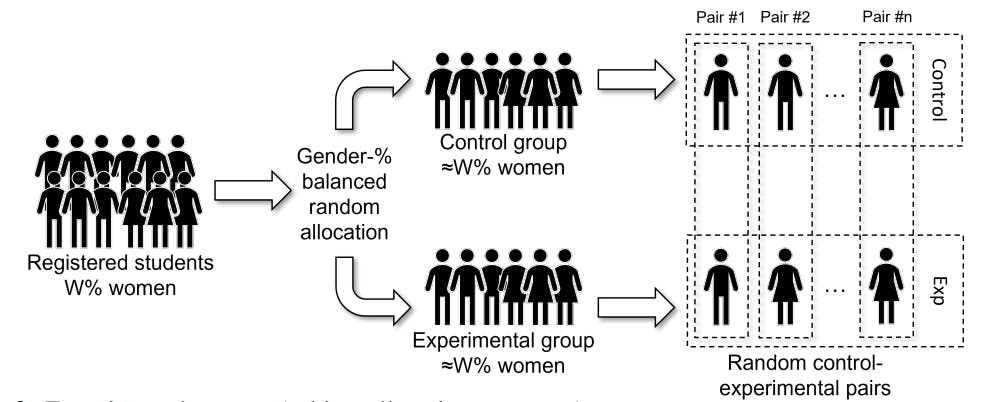Table of Links
Abstract and 1 Introduction
1.1 The twincode platform
1.2 Pilot Studies
1.3 Other Gender Identities and 1.4 Structure of the Paper
2 Related Work
3 Original Study (Seville Dec, 2021) and 3.1 Participants
3.2 Experiment Execution
3.3 Factors (Independent Variables)
3.4 Response Variables (Dependent Variables)
3.5 Confounding Variables
3.6 Data Analysis
4 First Replication (Berkeley May, 2022)
4.1 Participants
4.2 Experiment Execution
4.3 Data Analysis
5 Discussion and Threats to Validity and 5.1 Operationalization of the Cause Construct — Treatment
5.2 Operationalization of the Effect Construct — Metrics
5.3 Sampling the Population — Participants
6 Conclusions and Future Work
6.1 Replication in Different Cultural Background
6.2 Using Chatbots as Partners and AI-based Utterance Coding
Datasets, Compliance with Ethical Standards, Acknowledgements, and References
A. Questionnaire #1 and #2 response items
B. Evolution of the twincode User Interface
C. User Interface of tag-a-chat
Several systematic literature reviews (SLRs), which are summarized in Table 2, have compiled the empirical research on pair programming in higher education, including [12], which is focused on distributed pair programming from a teaching perspective.
The SLR by [46] reveals that the most important factor under study is solo versus pair programming in terms of effectiveness, quality of code, and satisfaction while students are programming, concluding that pair programming is more effective and satisfactory than solo programming. However, with respect to quality, findings are inconclusive.
Other SLRs, such as the ones by [25], [32], and [27], show that the focus of the studies is broadened, including factors such as personality, motivation, problem solving, troubleshooting, efficiency, confidence, self-esteem, skill level, gender, or enjoyment but not gender bias. In general, students rate pair programming positively compared to solo programming. Nevertheless, pair programming is effective but not always efficient, as it may take longer.
By means of controlled experiments, remote and co-located pair programming are compared by [53] and [3], showing similar results. In most cases, the analyzed variables are related to performance in terms of time, quality, or code tests passed. Students perceptions have also been analyzed in terms of confidence, satisfaction, motivation, or personality by [48].
Regarding primary studies, Table 3 summarizes the empirical studies on the influence of gender in pair programming, including findings such as (i) same-gender pairs are more “democratic”; (ii) women working in pairs were more confident than those working solo; and iii) in mixed-gender pairings, women are less confident compared to same-gender pairings, and report no increase in enjoyment for pair programming compared to solo programming, an effect that is significantly observed in men [32]. Although such studies reveal that gender seems to be a key factor, none of them study gender bias in pair programming.
Many factors other than gender may affect the outcomes of remote programming sessions [6, 56]. Previous research on productive pairing looked at factors such as skill levels, autonomy in choosing one’s partner [62], and different personalities [26]. Nevertheless, the work on gender composition of pairs found conflicting results about whether same-gender or mixed-gender pairings are more effective [7, 8, 28, 33]. One possible explanation is that gender correlates with other dimensions that may affect the pairs’ collaboration, but these correlations may vary between different environments. For example, women in a class may, on average, have higher skill level than men because they had to face more societal barriers to enter the class. On the other hand, they may, on average, have lower skill level if women with no background are more actively recruited.
Authors:
(1) Amador Duran, I3US Institute, Universidad de Sevilla, Sevilla, Spain and SCORE Lab, Universidad de Sevilla, Sevilla, Spain ([email protected]);
(2) Pablo Fernandez, I3US Institute, Universidad de Sevilla, Sevilla, Spain and SCORE Lab, Universidad de Sevilla, Sevilla, Spain ([email protected]);
(3) Beatriz Bernardez, I3US Institute, Universidad de Sevilla, Sevilla, Spain and SCORE Lab, Universidad de Sevilla, Sevilla, Spain ([email protected]);
(4) Nathaniel Weinman, Computer Science Division, University of California, Berkeley, Berkeley, USA ([email protected]);
(5) Aslıhan Akalın, Computer Science Division, University of California, Berkeley, Berkeley, USA ([email protected]);
(6) Armando Fox, Computer Science Division, University of California, Berkeley, Berkeley, USA ([email protected]).











